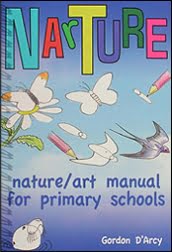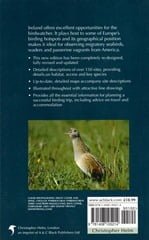 When it comes to conservation there’s nothing more important than encouraging young children to connect and engage with the natural world around them.
When it comes to conservation there’s nothing more important than encouraging young children to connect and engage with the natural world around them.
Children have an innate curiosity for nature that makes them open to exploring its secrets — but that connection doesn’t last long. Unless we nurture that spark of interest at an early age, and fan it into an enduring flame of discovery and wonder, the distractions of modern life soon kick in and the opportunity is lost, often forever.
But how do you get young children to engage with the natural world when there’s so much unnatural competition around today? School is a great place to start — but it’s a challenge that’s far from easy: young children are a very demanding audience.
This year I’ve had the privilege of visiting several County Cork primary schools as a Heritage Expert on the Heritage Council’s fabulous Heritage in Schools Scheme. It’s always a wonderful experience… but can also be a daunting one. A small class of six and seven year olds can be a much tougher crowd than an assembly-room full of adults. The trick is to capture their imagination.
Art + Nature = Engagement
Capturing the attention of young children is easy… but retaining it can be extremely difficult. One of the most effective ways of doing that is to tap into their combined enthusiasm nature and art. Children love to be creative… and if you couple that with their instinctive curiosity for the world around them you have a recipe for sustained engagement and a powerful foundation for learning.
But where do you start? There are literally thousands of possible ways you could explore — but what works and what doesn’t. Finding out used to be largely a matter of educated guesswork and trial-and error — but now, thanks to naturalist, educator, artist and author Gordon D’Arcy, you don’t have to start from scratch in your quest to get children engaged with nature through art.
In his book Narture (a portmanteau of nature and art) Gordon shares the tools, techniques and exercises he’s developed over many years of hands-on experience teaching primary school children about the wonders of the natural world through art.
The book is aimed at primary school teachers, and starts with a series of guidelines to help teachers maximise the value of the pages that follow. It then introduces a series of starter shapes that both children and teachers can use as the basis for nature art. Then come a series of exercises split into those suitable for junior classes, intermediate classes and senior classes, and covering a whole hosts of topics from playground nature to whales and dolphins and everything from drawing and colouring to making models and building mini-microclimates. It focuses on nature and art, but also touches on other areas of the curriculum like science and history.
Narture is a treasure trove of ideas for any educator looking to get young children engaged with the natural world around them through art. While it is focussed on teachers I can see it offering lots of ideas for parents who want to spend quality time with their children, getting them away from their games consoles and computers and closer to the natural world around them.
What does a full-time educator think?
While I enjoy exploring the wonders of wildlife with children during my school heritage visits, and have used elements from Narture to help put together some of the material I use, I was curious to find out what a full-time educator would make of the book. On one of my recent visits I passed my review copy Narture to the principal of the school and asked her to take a look and give me her honest opinion.
Here’s what she had to say:
“Narture” the nature and art manual for primary schools is a welcome addition to any classroom.
It is informative, simply written and easy to follow: three key things that are welcomed by primary school teachers. It offers lessons for all levels so it can be used across the whole school community.
It enhances the children’s natural artistic flair as its step by step guide allows children to create wonderful masterpieces from simple shape drawing. I found the concise teacher notes very useful and they lent themselves well to discussion for hands-on learning.
I most certainly will be recommending “Narture” to my fellow teaching colleagues in the future.
Gabrielle Crowley (Principal)
Derrinachara National School, Dunmanway, Co. Cork
Narture is published by Gordon D’Arcy with support from the Heritage Council under the 2009 Publications Grant Scheme. It is available to buy for €25 from the author’s website here.
To find out more about arranging a primary school visit from Calvin Jones of Ireland’s Wildlife under the Heritage in Schools Scheme check out the Discover Wildlife at School page.









